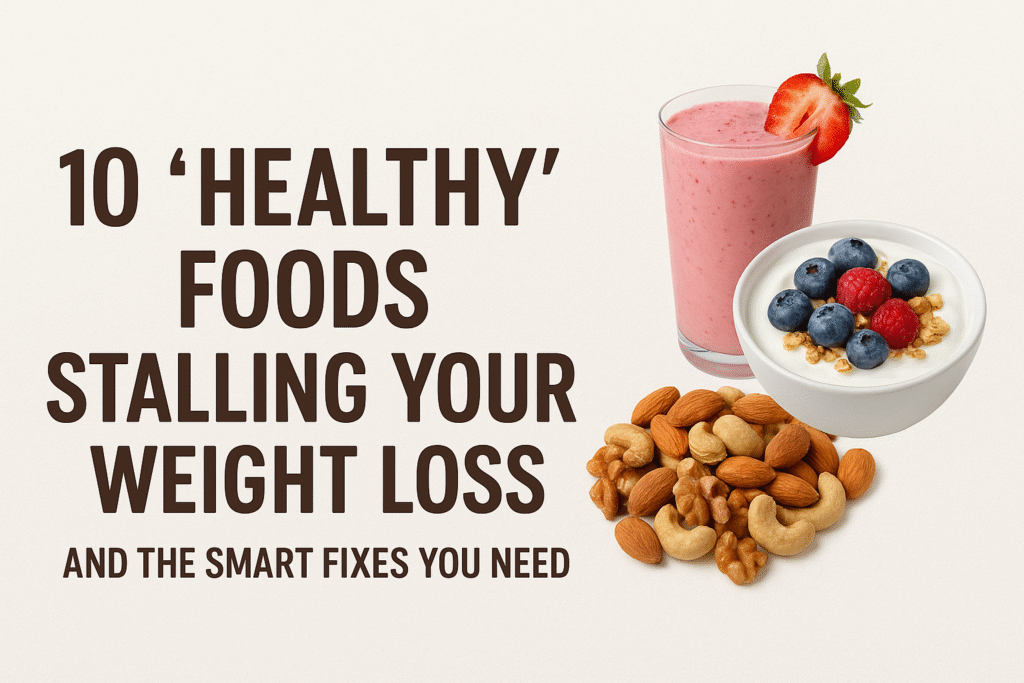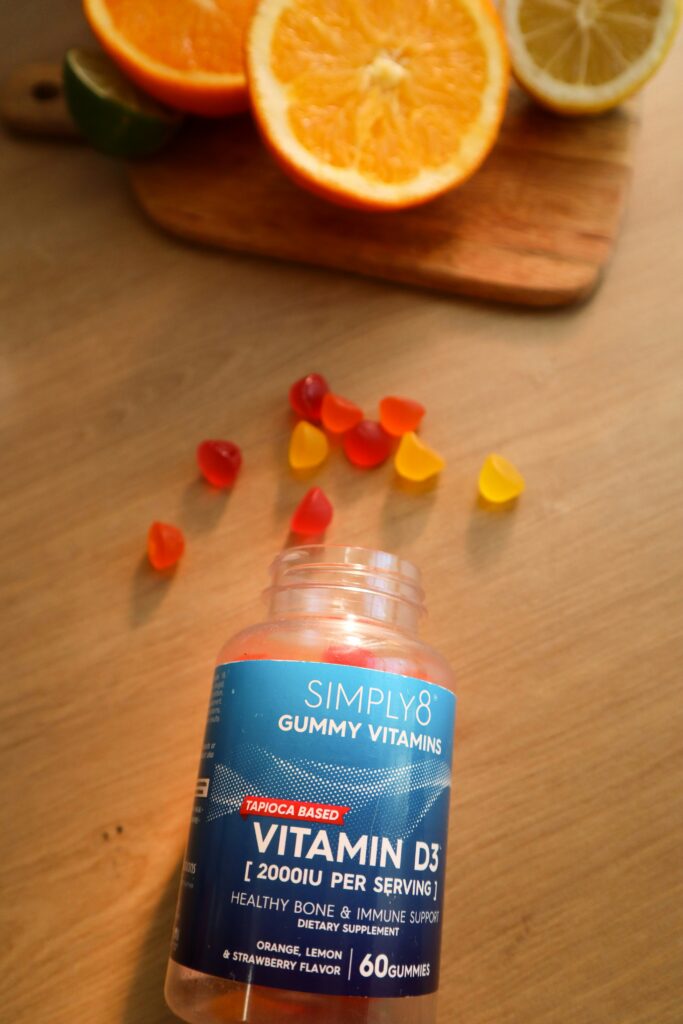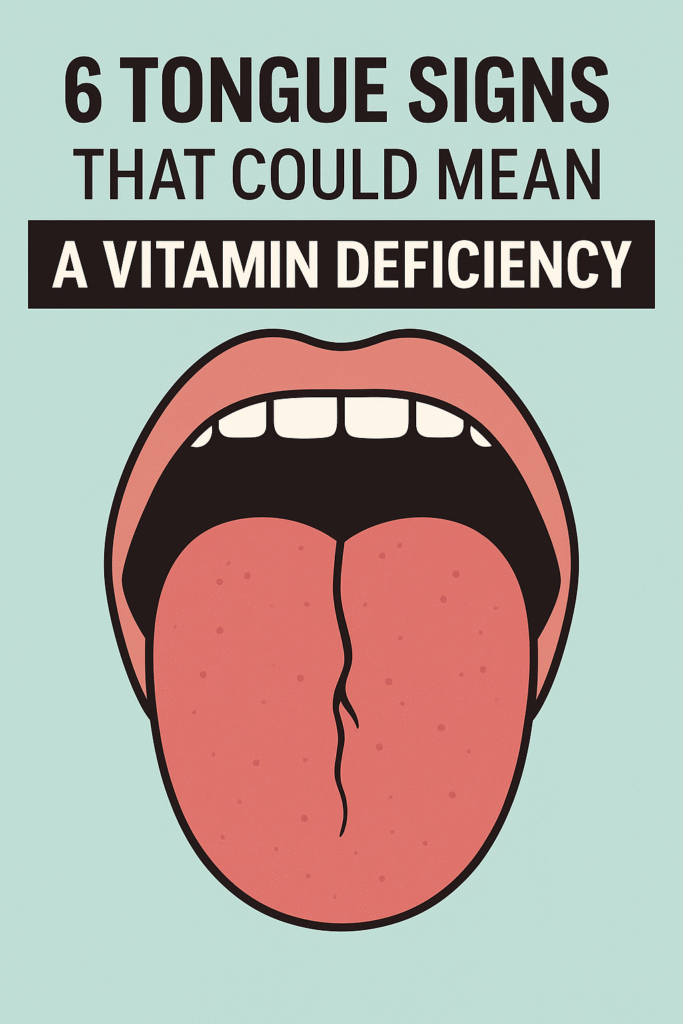
⚠️ Affiliate Disclaimer: This post may contain affiliate links, which means I may earn a small commission — at no extra cost to you — if you make a purchase through one of these links. I only recommend products or services I genuinely trust and believe can provide value. Thank you for supporting My Medical Muse!
10 Healthy Foods Stalling Your Weight Loss And The Smart Fixes You Need
10 Healthy Foods That Might Be Stalling Your Weight Loss (And What to Eat Instead)
When you’re trying to lose weight, it’s natural to gravitate toward foods labeled “healthy,” “organic,” or “low-fat”, but here’s the catch, not every food marketed as “good for you” is actually helping your waistline.
In fact, some of these so-called healthy options can quietly sabotage your progress by packing in hidden sugars, refined carbs, or excess calories that keep your body from burning fat efficiently.
Let’s break down the top 10 foods you might think are healthy, but could be stalling your weight loss, along with smarter alternatives that truly support your goals.
1. Smoothies: The Hidden Sugar Bombs
Why They Stall Weight Loss
Smoothies sound like the ultimate healthy meal, a blend of fruits, yogurt, and maybe a scoop of protein powder, but many store-bought or café smoothies are loaded with sugar from fruit juice, flavored yogurt, and syrupy add-ins.
Some contain over 60 grams of sugar (that’s more than a can of soda) and 500-700 calories in a single serving. Even homemade ones can be calorie-dense if you’re tossing in multiple fruits, nut butters, and sweeteners.
Better Choice
Go for a low-sugar, high-protein smoothie:
- Base: unsweetened almond or oat milk
- Protein: Greek yogurt or plant protein powder
- Fiber: chia seeds, spinach, or avocado
- Sweetness: a handful of berries (low glycemic index)
Stick to one serving of fruit per smoothie and measure nut butters instead of eyeballing.
2. Granola: Crunchy, Sweet, and Calorie-Dense
Granola has an innocent, wholesome image, oats, nuts, honey, right? But most packaged versions are loaded with sugar and oil, making them calorie-heavy.
A small half-cup serving can contain 250-300 calories and up to 20 grams of sugar and because it’s crunchy and delicious, most people eat double or triple that amount.
Better Choice
Choose plain rolled oats or low-sugar muesli, and top it yourself:
- Add nuts, seeds, and a sprinkle of cinnamon for flavor.
- Sweeten naturally with fruit or a teaspoon of honey.
If you love granola, make your own at home with minimal oil and no refined sugar.
3. Flavored Yogurt: A Dessert in Disguise
Yogurt is a great source of probiotics and protein, but flavored yogurts often come with added sugars, artificial flavors, and fruit syrups that cancel out the benefits.
Some brands contain as much sugar as a slice of cake. Even “low-fat” yogurts can cause blood sugar spikes that trigger hunger later on.
Better Choice
Opt for plain Greek yogurt or unsweetened natural yogurt. Add your own toppings:
- Fresh fruit
- A drizzle of honey or date syrup
- Chia seeds or cinnamon for extra flavor
Look for yogurts with less than 6 grams of sugar per 100g and at least 10g protein per serving.
4. Energy Bars and Protein Bars: Convenience Traps
Why They Stall Weight Loss
While marketed as fitness snacks, many bars are highly processed and packed with syrups, hydrogenated oils, and sugar alcohols that cause bloating and cravings.
Some contain 300 calories and 20 grams of sugar, which is equivalent to eating a candy bar with added protein powder.
Better Choice
Pick bars with at least 10g protein, under 200 calories, and less than 8g sugar or make your own energy bites with:
- Oats
- Natural peanut butter
- Chia seeds
- A small amount of honey
Bars are for emergencies, not daily snacks. Whole foods always win.
5. Fruit Juices: Liquid Sugar in a Bottle
Even 100% “natural” fruit juices are stripped of fiber during processing. What’s left? Pure sugar and calories that cause insulin spikes, leading to fat storage.
For example, a single glass of orange juice can contain the sugar of four oranges but none of the fiber to slow absorption. That’s why juice can make you hungrier, not fuller.
Better Choice
Eat whole fruits or make vegetable-based smoothies with a small portion of fruit.
If you must drink juice, dilute it with water (1:1 ratio) and keep to ½ cup per serving.
If your goal is fat loss, drink water, green tea, or lemon-infused water instead.
6. Whole Wheat Bread: Not Always “Whole”
Many “whole wheat” breads are made with refined flour (enriched wheat) and just a small amount of whole grains. This means they digest quickly, causing blood sugar spikes and hunger shortly after.
Even authentic whole wheat bread can stall weight loss if eaten in large portions, especially when paired with calorie-rich toppings like nut butter or avocado.
Better Choice
Choose sprouted grain bread (like Ezekiel bread) or sourdough made from 100% whole grains.
Limit yourself to 1-2 slices per meal and load up on protein or veggies to balance it out.
7. Salads with Heavy Dressings: The Sneaky Calorie Loaders
Salads are the poster child of healthy eating, but add creamy dressings, cheese, croutons, or processed meats, and you’ve got a calorie bomb disguised as a diet meal.
Some restaurant salads exceed 800-1000 calories, especially those with ranch or Caesar dressing.
Better Choice
Build a nutrient-balanced salad:
- Greens: kale, spinach, arugula
- Protein: grilled chicken, tofu, or boiled eggs
- Carbs: quinoa, chickpeas, or sweet potato
- Dressing: olive oil and lemon, Greek yogurt-based, or balsamic vinegar
Keep your dressing to 1-2 tablespoons and skip sugary vinaigrettes.
8. Dried Fruit: Concentrated Sugar Bites
Dried fruit is healthy in theory, full of fiber and nutrients, but once dehydrated, its sugar content becomes concentrated, and portion sizes shrink dramatically.
A handful of raisins can contain the calories of four whole apples without the same fullness effect plus, many commercial dried fruits are coated with added sugar or oil.
Better Choice
Eat fresh fruit or limit dried fruit to a small handful (1-2 tablespoons).
For snacks, pair it with nuts or Greek yogurt to slow sugar absorption. Always check labels for “no added sugar” and “unsulfured” varieties.
9. Nut Butters: Healthy Fats, But Easy to Overdo
Nut butters like almond or peanut butter are packed with nutrients but they’re also calorie-dense. Just 2 tablespoons can deliver 200 calories and 16 grams of fat.
When spread thickly on bread, added to smoothies, or eaten by the spoonful, those calories add up quickly and can exceed your daily energy needs.
Better Choice
Measure portions carefully, 1 tablespoon is plenty.
Look for brands with no added sugar or hydrogenated oils.
Try powdered peanut butter (like PB2) for a lower-calorie option.
Treat nut butter as a flavor enhancer, not a meal base.
10. Low-Fat or “Diet” Foods: The Biggest Weight Loss Myth
When fat is removed from food, manufacturers often add sugar, starch, or artificial flavorings to compensate for the loss of taste and texture.
The result? Foods that are less satisfying and can spike hunger later, leading to overeating.
Research shows that full-fat options, when eaten in moderation, can actually promote satiety and improve hormone balance.
Better Choice
Choose whole, minimally processed foods:
- Full-fat Greek yogurt
- Real cheese in small portions
- Homemade dressings with olive oil
Don’t fear healthy fats, they’re essential for metabolism and hormone regulation.
Healthy Beverages That Sabotage Fat Loss
Even if your meals are clean, drinks can sneak in hundreds of calories:
- Flavored coffee drinks: Many are dessert-level in sugar (up to 400 calories).
- Kombucha: Healthy for gut health, but some brands pack 15g sugar per bottle.
- Coconut water: Great for hydration, but still high in natural sugars.
Stick with water, black coffee, green tea, or infused herbal teas.
How to Spot Hidden “Health” Traps on Food Labels
Learning to read nutrition labels is one of the most powerful skills you can develop for long-term weight management. Marketing words like “natural,” “organic,” “whole grain,” or “light” can be incredibly misleading and without label literacy, you might end up eating far more sugar, fat, or calories than you realize.
Here’s how to decode what’s really in your “healthy” food:
1. Check the Ingredients Order
The ingredient list is arranged in descending order by weight, meaning the first three ingredients make up most of the product.
If you spot sugar, syrup, refined flour, or hydrogenated oils among the first few, that’s a red flag.
For example:
- A “whole grain” cereal that lists sugar or corn syrup before whole oats isn’t as wholesome as it looks.
- “Multigrain” bread may contain a blend of refined flours with only a sprinkle of actual whole grains.
Choose foods with short ingredient lists you can recognize and pronounce. Whole, real ingredients like oats, almonds, or chickpeas should dominate the list.
2. Watch Out for Serving Size Tricks
Portion distortion is a common marketing tactic. Many low-calorie snacks or fit granola bars list unrealistically small serving sizes, often half or even one-third of what you’d typically eat.
For instance:
- A protein bar labeled “150 calories per serving” may actually contain two servings per bar, meaning you’re consuming 300 calories if you eat the whole thing (which most people do).
- A 100-calorie bag of chips might only be 10 chips hardly satisfying.
Always multiply the listed calories, sugar, and fat by the number of servings you actually consume. This single step can reveal the true impact on your daily calorie intake.
3. Identify Hidden Sugars (aka Sugar Aliases)
Food companies know that “sugar” has a bad reputation, so they disguise it under dozens of names.
Watch out for these sneaky sugar aliases:
- Dextrose
- Maltose
- Cane juice
- Agave nectar
- Brown rice syrup
- High-fructose corn syrup
- Fruit juice concentrate
Even “natural” sweeteners can raise your blood sugar and trigger cravings when consumed in excess.
The higher these ingredients appear on the label, the more sugar the product contains, even if it’s organic. Try to stay under 10 grams of added sugar per serving for most packaged foods.
4. Fiber and Protein: Your Fullness Friends
Fiber and protein are your best allies when it comes to satiety and fat loss. They help control hunger, stabilize blood sugar, and keep you full longer, preventing overeating later.
Look for foods with:
- At least 3 grams of fiber per serving
- At least 5 grams of protein (preferably 10g for snacks or bars)
High-fiber, high-protein foods support a steady metabolism and make a calorie deficit easier to maintain without feeling deprived.
Example:
Instead of a low-fat granola with 20g of sugar and 1g of fiber, opt for unsweetened oats with chia seeds and Greek yogurt, lower in sugar, higher in fiber, and twice as filling.
Mindset Shift: “Healthy” Doesn’t Always Mean Weight-Loss Friendly
One of the biggest misconceptions in dieting is assuming that “healthy” automatically means “low-calorie”, but a food can be full of nutrients and still work against your fat-loss goals if you’re not mindful of how much or how often you eat it.
Here’s where most people slip up:
1. Eating Too Much of a Good Thing
Foods like nuts, avocado, olive oil, or hummus are nutrient powerhouses but they’re also calorie-dense.
A single handful of almonds (about 20 nuts) is around 170 calories, and a tablespoon of olive oil adds 120 calories. When these add up, they can easily push you out of a calorie deficit, even though they’re “healthy.”
The fix: Use measuring spoons or portion your snacks in advance. Moderation is key.
2. Combining Too Many Calorie-Dense Foods in One Meal
You might have the right ingredients, but if your salad includes avocado, feta cheese, croutons, nuts, and creamy dressing, it can quietly climb to 800-1000 calories.
The fix: Choose one or two high-calorie ingredients per meal (for example, avocado or nuts, not both). Then balance it with lean proteins and plenty of vegetables for volume and nutrients.
3. Relying on Packaged “Fit” Snacks Instead of Whole Foods
Protein cookies, “keto” brownies, or “energy bites” sound healthy, but they’re often highly processed and full of sugar alcohols or additives that can cause bloating and cravings.
The fix: Eat real, minimally processed foods whenever possible.
For quick snacks, think:
- Boiled eggs
- Greek yogurt
- A small apple with peanut butter
- Handful of mixed nuts
Whole foods deliver more nutrients per calorie and naturally help regulate hunger hormones.
The Real Rule of Fat Loss
True fat loss happens when your body consistently stays in a calorie deficit, meaning you consume fewer calories than you burn, but not all deficits are created equal. The quality of your food matters because nutrient-dense meals help control appetite, balance hormones, and maintain muscle, all essential for sustainable fat loss.
When your diet is built on whole, fiber-rich, and protein-packed foods, you naturally feel more satisfied while eating fewer calories, no fad diets required.
Smart Weight-Loss-Friendly Swaps
Small changes make a big difference. Here’s how to replace common “healthy” culprits with options that support your fat loss goals without sacrificing flavor:
Instead of: | Try This: |
Fruit juice | Whole fruit or infused water (for fiber and hydration) |
Flavored yogurt | Plain Greek yogurt topped with fresh berries and cinnamon |
Granola | Overnight oats with nuts, chia seeds, and unsweetened almond milk |
Low-fat dressing | Olive oil and lemon juice or balsamic vinegar |
Healthy chips | Air-popped popcorn or roasted chickpeas |
Protein bar | Boiled eggs or homemade oat-and-nut energy bites |
Dried fruit | Fresh apple slices or a handful of berries |
Smoothie bowl | Protein smoothie with spinach, chia seeds, and unsweetened almond milk |
These swaps aren’t about restriction, they’re about smarter nourishment. You’ll still enjoy delicious meals but with better control over calories, sugar, and portion sizes.
Final Thoughts: Balance Over Labels
Eating healthy isn’t about eliminating entire food groups or following rigid rules, it’s about awareness and balance.
If your goal is weight loss, how much and what kind of healthy foods you eat makes all the difference. Even nutrient-rich foods can slow your progress if eaten in excess or combined poorly.
Here’s what truly moves the needle:
- Prioritize high-protein and high-fiber foods, they keep you satisfied longer.
- Limit added sugars and refined carbs, they trigger cravings and energy crashes.
- Focus on foods close to their natural form, the fewer ingredients, the better.
- Be mindful of portions, even healthy fats and snacks can add up.
You don’t need to cut out these foods completely, you just need to understand them.
By reading labels carefully, keeping portions realistic, and swapping out calorie traps for smarter alternatives, you can enjoy healthy, satisfying meals and see consistent progress toward your goals.
Remember, the most sustainable weight loss comes not from eating less, but from eating bette. Real food, simple ingredients, and mindful eating always win the long game.
👩⚕️ Need Personalized Health Advice?
Get expert guidance tailored to your unique health concerns through MuseCare Consult. Our licensed doctors are here to help you understand your symptoms, medications, and lab results—confidentially and affordably.
👉 Book a MuseCare Consult NowRelated Blog Post You Might Like:
- How to Stop Gas After Eating Beans: 12 Proven Ways to Prevent Bloating
- Why Do I Feel Full but Still Hungry? 11 Powerful Reasons Explained
- Why Do I Gain Weight When I Don’t Sleep Enough? 11 Proven Scientific Reasons You Can’t Ignore
- Why Does My Face Gain Weight Before My Body: 7 Surprising Reasons
- 7 Surprising Reasons for Weight Gain After Quitting Sugar (and How to Fix It Fast)
- 7 Surprising Reasons Why You Gain Weight After Stopping Exercise
- 7 Hidden Reasons Why You Get Constipated After Eating Rice (and What Really Helps)


